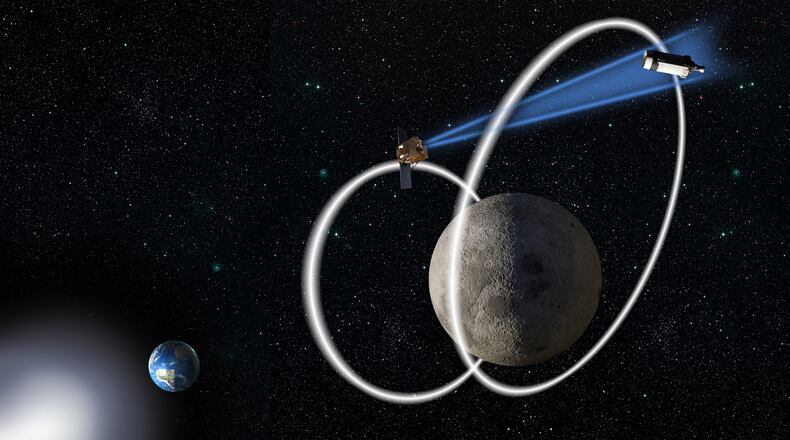That project is called “CHPS” for the “Cislunar Highway Patrol System," said the director of the AFRL Space Vehicles Directorate, Col. Eric Felt.
“The debris environment in that area is poorly understood and would benefit from a system like CHPS,” Capt. David Buehler, CHPS program manager, said in an email to the Dayton Daily News.
To oversimplify a bit, the experiment will involve building a small satellite and launching it 85% of the way to the moon.
“Its going to look for satellites and other activities going on up there,” Felt told the Dayton Daily News in an interview.
U.S. Space Command has an area of responsibility starting at 100 kilometers from Earth “and extending to infinity,” Buehler noted.
“As U.S. interests extend to the moon, the ‘protect and defend’ mission of the Space Force will need to grow with them. One of those U.S. interests is space exploration, and we would like to work with NASA to aid in safety of flight for their planned exploration missions,” he said.
The CHPS experiment will explore concepts for detecting and tracking objects between Earth’s orbit and “cislunar space.”
“The 21st century space economy is expanding beyond traditional orbits out to the moon with commercial companies seeking to harvest resources, and NASA and other countries returning to the moon,” Buehler said in an AFRL release.
That increase in the number of objects in space will require greater domain awareness, which is what CHPS is trying to address, AFRL said. The goal is to ensure safety of flight when the United States again puts boots back on the moon.
As an early-stage program, the project has not joined with any particular contractor or set of contractors yet, he added. The Air Force is drafting a “request for information” — or an invitation to private companies to offer their input — and will release that by year’s end, he said.
“CHPS is just the first step to help us understand domain awareness in cislunar space," Felt said. “We are also starting to explore basic science and technology in autonomy, on-orbit processing, and logistics in all orbits, which become even more important the further you are from the Earth.”
CHPS will also explore other technologies required to support the mission like communication and navigation, AFRL said.
Felt said objects of concern out there are vehicles and satellites sent by other countries, including China and Russia. “We have a lot of state activity that’s going to be going to the moon in the next few years.” And private companies are getting in on the lunar action, as well, he added.
“Space traffic management” is paramount, he said.
“It’s increasing exponentially over the next decade," Felt said of the expected number of satellites and vehicles expected to be in the moon’s neighborhood in coming years.
A lot of “space domain awareness” today is conducted with sensors on the ground. One concern: The moon is so bright, it can be next to impossible to see satellites around the moon from Earth.
And those satellites must be seen if the United States is to return to the moon.
“I need to have some technologies to be ready to do that,” said Felt, who will transfer to Space Force from the Air Force early next year.
Wright-Patterson will be involved, Felt said. There’s an AFRL sensors directorate at WPAFB, and that could be well be involved in this experiment, as could other facets of AFRL.
About the Author

